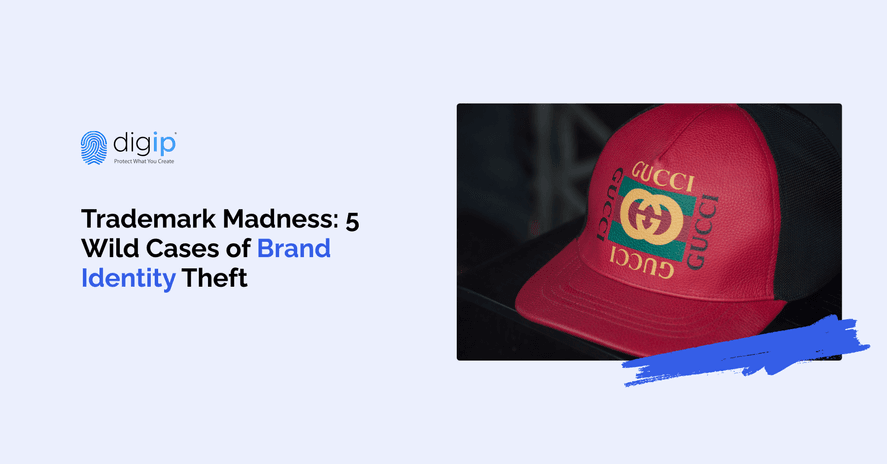
- Trademark
Benefits of Trademark Registration
Know the benefits of trademark registration, so you will know why you need to register your trademark.
A trademark can either be a name, word, or symbol that is used to distinguish or identify a seller's product from the others. As a part of the company's brand, a trademark symbolizes the business' identity and embodies the reputation of the company. Over time, having a trademark allows your business to significantly accumulate goodwill. Take into consideration the value that top brand names like McDonald's, Google, and Apple have right now. The brand Apple was able to surpass the $200 billion valuation on Forbes' annual list of the Most Valuable Brands. According to the valuation, the brand Apple accounts for more than 20% of the existing market cap of Apple. There is an automatic rise in trademark rights whenever a seller gets to use their mark for commerce in selling their services and goods. According to specific requirements, these automatic rights would grant the trademark owner the right to have others excluded from using or adopting their mark in their geographic area.
However, if these rights can automatically arise, why do people have to consider taking additional steps and expenses in registering a trademark in the Patent & trademark Office of other areas?
There is a simple answer to this. With registration, the brand of your company will have an enhanced value and increased protection. The owner of the trademark will enjoy significantly greater protections and rights when they register their mark. Here is a list of benefits that trademark registration can provide to your business:
Allows for Nationwide Priority
The most valuable advantage of registering a trademark is that it accompanies nationwide priority. The one who owns an unregistered trademark may be able to preclude the mark for use by others only in its limited geographic area. Those who have a registered trademark can preclude the use of the mark by anyone all throughout the United States. Having this can be particularly vital now that we are in the age of the internet, as online traffic can come across different companies that have the same names. It can also be highly beneficial for a company that wants to expand in the future. Having the exclusive rights to a brand name all throughout a whole nation can be way more valuable compared to getting exclusive rights that are limited to a certain geographic location.
Significantly Reduces Enforcement Expenses
Having a Public Record of Ownership, Legal Presumptions, and Constructive Notice from a trademark Office that maintains a public database of registration certificates can make the registrant's ownership of a subject trademark a matter of public record. With this record, the public will be notified that the registrant owns and has the exclusive right to use this mark, whether or not there is an accused infringer with actual information about this information. "Constructive Notice" can eliminate the use of an accused infringer or defense of adoption in good faith. According to the public record, others are discouraged from adopting the same mark. Aside from that, the one who owns the registered trademark will get entitled to numerous presumptions in court, allowing for the enforcement of their rights to be significantly more affordable. Under the Landham Act, having a certificate of registration is the prima facie evidence that the mark is valid and the registrant owns the mark that they have the right to use exclusively. Because of that, the accused infringer will be burdened to prove the contrary if they want to challenge these ideas. If the mark is unregistered, the owner will be burdened to prove these points when someone challenges them, making the proposition highly expensive.
For registered Marks, the presumption has been extended by courts to include the prima facie evidence of continuous use of the mark from the date of filing. This mark should not be confusingly similar to any other registered mark. The mark must acquire distinction through long-term use or be inherently distinctive, and it needs to be used in interstate commerce before it gets registered. This mark should also not be a generic name nor invalid as a functional design. In case a trademark owner gets to enforce their rights in court, with these presumptions, the owner will be able to save a significant amount of money and avoid the expenses involved in the litigation of these points.
Provides Incontestable Status After Five Years of Registration
Once you undergo five more years of exclusive and continuous use after you register, your registered trademark would become "incontestable." It means that it is not possible to challenge certain aspects of the trademark. The registrant needs to file a sworn statement at the right time to get a status that is incontestable. In effect, this would create a "super trademark." According to the Lanham Act, this is when a mark becomes incontestable, and the registration certificate turns into conclusive evidence instead of merely prima facie evidence of the mark's validity. The registrant owns the mark that the registrant has the exclusive right to use. In other words, the registrant would be able to prevail in court that contrary evidence cannot rebut.
Aside from that, anyone who would want to challenge the rights of the owner, like an accused infringer, will become greatly restricted when it comes to their ability to do this. As an example, an incontestable mark could not get challenged based on the grounds that it merely describes services or goods offered for sale. Having an incontestable mark is beneficial as it can save so much litigation expenses when a trademark owner gets forced to file a lawsuit of infringement. Incontestability does not just help with legal expenses, but it can also give a strong deterrent to those who want to adopt a similar mark or those who desire to continue using the same mark even if they get a cease-and-desist letter. The one who owns an incontestable mark could often convince the accused infringer to surrender before it would be necessary to undergo a lawsuit.
Allows the Right to Use the Symbol ®
After an owner registers a trademark, they can start marketing their products under the mark with the use of the symbol ®. With this symbol, the public is notified that the mark got registered, and its owner will enjoy all of the benefits accompanied by the registration. This symbol can allow the mark to be more credible and notify any possible infringer that the owner is serious about their intellectual property rights. Because of that, it allows for the generation of a greater deterrent to conduct infringement.
Increased Damages Against Those Who Counterfeit
Whenever a trademark gets registered, the owner of the trademark will become eligible for damages that are enhanced against those who counterfeit. The Lanham Act allows statutory damages provided against counterfeiters. It also includes attorney fees and treble damages for willful counterfeiting. Since it can sometimes be challenging to prove this, especially if the accused counterfeiter appears to be willing to falsify information and lie, these statutory damages can lead to a redress avenue wherein it can be prohibitively costly or challenging to prove any damages. Aside from that, with registration, counterfeiters are further deterred as this can provide for the recovery of legal fees and treble damages whenever it appears that counterfeit sales are willful.
Gives Protection Against Cybersquatters
Domain name registrars like GoDaddy were able to adopt the UDRP or Uniform Dispute Resolution Policy. This informal mechanism for dispute resolution aims to challenge the ownership of a certain domain name without fully undertaking a lawsuit. To successfully challenge a domain name according to the UDRP, the one who claims needs to prove that they have the rights in the trademark they are claiming, and the domain registrant was able to obtain this domain in bad faith. If you don't have a registered trademark, it can be extremely challenging and almost impossible to prove your rights in the mark, and the domain was registered in bad faith.
With registration, the owner of the trademark will be permitted to become a participant of the trademark Clearinghouse. It is a centralized data repository of court-validated, registered, and treat or statute-protected trademarks. It has a database that gives information on domain registrars, registries, and trademarks. Because of this, a trademark owner will be allowed to have its mark applied in connection with a new gTLD or generic top-level domain. As an example, the one who owns the registered trademark Deloitte has the first claim to the domain name Deloitte.law during the sunrise period of the gTLD like before the domain name becomes available to the public. Because of the trademark Clearinghouse, the one who owns the trademark registration may also decide to get a notification whenever someone attempts to get a domain name that contains the mark which has a new gTLD.
Protects Against the Importation of Infringing Products
The one who owns the registered trademark for physical goods may work on sending an application so they can record their mark with the Institution that handles customs and border Protection that can monitor, detain, and seize imported goods that can infringe on the rights of the owner. It is required to register to become a participant in this program.
Allows for Use in Platforms for Online Selling
There are specific online sales platforms that offer mechanisms that can enable brand owners to police and control products that are sold under the mark of the owner across the platform. As an example of this, the owner of the trademark may apply so they can be a part of a brand registry that can enable the owner to easily find infringers and control the brand. With this, you can have access to the platform's brand analytics. To be qualified to participate in this, these programs generally require the registration of the mark.
Becomes the Basis to Register a Trademark in Other Countries.
Since the United States is one of the parties of the Madrid Protocol, that country enables trademark owners of the nation to have their trademark rights extended to other countries that are parties of the Protocol. The trademark owner just needs to apply for registration so they can use the Madrid Protocol.
Example: 3M VS 3N
The 3M company filed a lawsuit against Changzhou Huawei Advanced Material Co. Ltd. for using the trademark 3N. Even if their pricing and products are not the same, since the 3M mark is well known and 3N had acquired market share and clients by using the same mark, it constituted infringement.
This trademark case in Chinese courts indicates that these matters are taken seriously even if this particular case appears to be too confusing and complicated. 3N has shifted into a dangerous zone for copying the trademarked name of a famous brand. They ultimately considered the "3M" trademark as a highly distinctive brand with an excellent reputation.
Because of that, the Chinese court ordered the Chinese company that blatantly infringed a well-known trademark to pay considerable damages to the owner of 3M. There are two Chinese trademark registrations that the 3M Company has. These are in class 17 that covers "retro-reflective plastic film other than for packing (to improve and boost visibility and safety)" and "thin sheets or strips made from retro-reflective materials." The trademarks' licensed user is the subsidiary, 3M China Ltd. Since 2004, it became responsible for manufacturing and distributing 3M's vehicle retro-reflective marking products in China. The local company "Huawei" or Changzhou Huawei Advanced Material Co. Ltd. applied to register the 3N trademark that is not original in the class 19 range of goods. 3M opposed this application, but the trademark authorities accepted it for limited specification. 3M eventually had this decision appealed to the trademark Review and Adjudication Board, and they upheld the opposition.
3M eventually launched proceedings for trademark infringement in the Hangzhou Intermediate Court. They sought all of the usual relief that includes damages, legal expenses, and injunction. Huawei defended their action by saying that the trademarks 3N and 3M are not similar and that people would not be confused. That is because they have used the 3N trademark for a long time on goods that were more affordable than 3M's, allowing them to build a stable market. Finally, they declared that they did not plan to infringe the 3M trademark because its corporate slogan or philosophy is "New Concept, New Technologies, New Products."
Despite that, the court of first instance ruled in favor of 3M as it has a famous and distinctive mark. Since the trademarks were visually identical, people can likely associate them with each other or become confused with them. Aside from that, it was clear that the infringement was intentional as the company never promoted its slogan.
The court eventually issued an injunction that ordered Huawei to stop selling goods using the 3N trademark and pay the legal expenses of 3M more than $500,000, even if the statutory limit was around $78,120 according to the 2001 legislation that they have applied to this case. The court considered the extensive scale and long duration of the infringement that Huawei made, including the considerable profit that the company earned from its infringement. The court also disapproved of the refusal of Huawei to submit their financial records as it is vital to know about the considerable market share that Huawei has acquired because of their unlawful conduct. It provides a clear message to any potential infringer to avoid copying trademarks. This decision has been encouraging for companies that have business interests in China. It exhibits that Chinese courts have a great understanding of trademarks and take it very seriously.
Conclusion
Since business owners are spending so much money, effort, and time in building their business, including its reputation in the marketplace, it is highly vital to protect that reputation for the company to survive and become successful in the future. Since this world has inescapable and continuously present risks, it can be essential to register a trademark. This simple process can increase your business' value and significantly minimize the risks. Registration allows nationwide priority over anyone else who would want to adopt the registered mark. Registration can significantly minimize the expenses involved in enforcing trademark rights. With registration, you will get better protection against cybersquatters, counterfeiters, and importers of infringing goods. Registration also provides so many advantages that include the qualification of the trademark owner so it can participate in programs that are available in online selling programs. Aside from that, it will be the basis for the trademark's registration in other nations.
Since trademark registration has so many benefits, it is undoubtedly among the essential steps that businesses need to take so they can protect their brand.
Register Your trademark with Digip
Digip can help brands get the best legal technology so they can secure their trademark rights all over the world. Through the Digip platform, clients can have a success rate of more than 95% on their trademark applications. Because of that, Digip is highly recommended in copyright and trademark registration. Contact Digip or book a meeting with a Digip trademark adviser if you need help in trademarking your business.
Protect your brand today!
- Trademark



